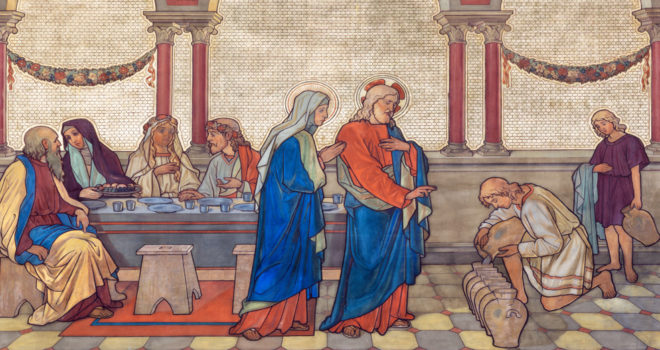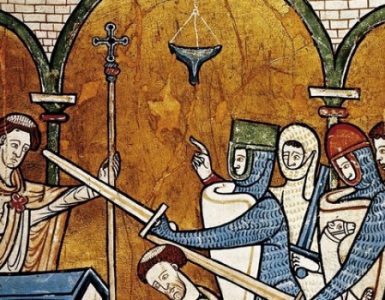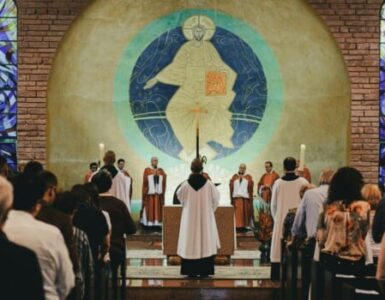Most of the parallels between the gospels and the
Genesis account of Eden seem to be at the beginning and ending of Jesus’ life.
For example, Mary’s dialogue with the angel is a reversal of the devil’s temptation of Eden. Likewise the cross is a reversal of the tree: in Eden, eating the fruit of the tree had condemned mankind but on the cross, the tree becomes a symbol of redemption. The fruit of cross, the Eucharist, is life giving rather than life taking. (I explored some other parallels between the Incarnation and Eden in this article last week.)
But there is another moment of radical reversal in
the middle of Jesus’ story that gets overlooked.
The story is certainly a familiar one, but it’s not
one we think of as being connected to Eden. It involves Mary, the beginning of
Jesus’ ministry, and His first miracle.
It’s the wedding at Cana. (Read the account in John 2 here.)
Consider the parallels.
In Eden, Eve brings the fruit to Adam, inducing Him to eat it. Eve acts as the initiator, awakening Adam’s desire for the forbidden food. (Read the account in Genesis 3 here.)
At Cana, Mary, the new Eve, initiates. In this case,
it’s not fruit, but wine made from the fruit of the vine. But, unlike the old
Eve, Mary does not draw Jesus to the wine. Instead, she goes to Jesus asking
Him to fulfill the need for wine.
The old Eve was so filled with the fullness of
material goods that she left little room for God. The new Eve was conscious of
mankind’s emptiness, leaving room for God to act. The first Eve was defined by
pride. The second by humility.
Again: the old Eve did not do whatever God told her.
The new Eve, on the other hand, stands out for telling the wedding servers to
do whatever the son of God told them.
There are deeper ties between the two accounts. In
the first, some have seen the fruit as symbolizing carnal lust, which fits,
since Adam had just met Eve and announced their conjugal union.
Remember, after seeing Eve, Adam declares, “This one,
at last, is bone of my bones and flesh of my flesh; this one shall be called
‘woman,’ for out of man this one has been taken.” The narrator adds: “That is
why a man leaves his father and mother and clings to his wife, and the two of
them become one body” (Gen. 2:23-24).
It is clear, then, that there has been some kind of
a primal marriage between Adam and Eve. The episode with the fruit happens
immediately next, in Genesis 3.
Again, this interpretation is reinforced by the
aftermath of the eating, which is recorded in verse 6. Notice what verse 7
says, “Then the eyes of both of them were opened, and they knew that they were
naked; so they sewed fig leaves together and made loincloths for themselves.”
This may seem like a strange reaction to eating forbidden fruit unless we
understand that fruit as a visible and tangle symbol of their carnal lust.
It goes without saying that in the case of Cana, the
wine—standing in for the fruit—is associated with purity, not lust. There are
two textual clues that signify this. The first is that the water used for the
wine was taken from ceremonial jugs used for cleansing. The second is that the
wine was a gift of Jesus to the couple. Lust is about taking, whereas true pure
love is a gift.
In this case, marital self-giving is situated in the context of the redemptive roles that Jesus and Mary exercise. In the story of Cana, we are given a vision of Jesus’ completely gratuitous self-gift. Grace is not something to be seized but instead something received from God. And then, in Mary, we see a portrait of the part she plays in our redemption: it is her role to be aware of mankind’s emptiness and His need to be filled with the joy of the divine wine. Bring your emptiness to Mary, ask Jesus for His fullness.
✠
image: Renata Sedmakova / Shutterstock














